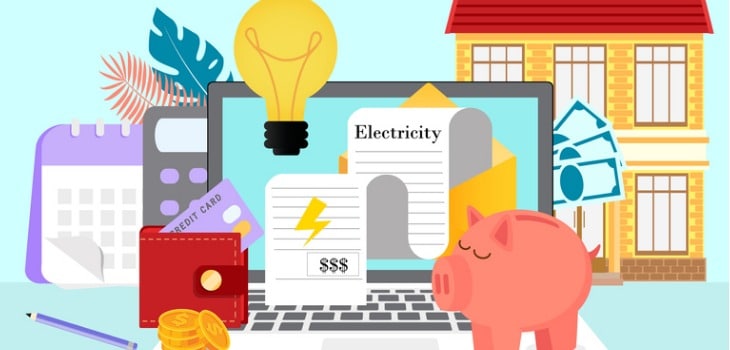
Are Electricity Rates Going Up in 2019?
You may have heard the news that July 2019 was the hottest month ever recorded. In other words, electricity use was through the roof as air conditioning units worked overtime to keep homes and businesses comfortable.
Electricity is a volatile market with many factors affecting the rate. The general consensus is that, like many recent years, electricity rates are getting higher for end users in 2019. Here’s why.
Wholesale Electricity Prices Are Down
The U.S. Energy Information Agency (EIA) recently adjusted their short-term energy outlook for electricity noting that wholesale prices for electricity are expected to go down in 2019. The EIA estimates year-over-year wholesale prices will range from -0.2% to -28%. The Electric Reliability Council of Texas (ERCOT) is enjoying the biggest decline in wholesale prices.
Why the decline? An abundance of cheap natural gas. Natural gas is replacing coal as the top energy source, which has helped suppress wholesale prices.
But Annual Residential Electric Rates Are Forecast to Go Up
Even though wholesale electricity prices are low, rates are expected to increase slightly for residential end-users. The EIA is estimating that the annual growth in residential electricity prices will be 1.2% in 2019. At about the halfway point (May 2019) the average rate had risen 1.3% year-over-year.
One of the main reasons rates have remained relatively stable and increased slightly is a demand for power. Electricity demand is just as high as ever. The global demand rose 4% last year and is expected to keep going up. In August of this year, Texas set new peak demand records due to sustained high temperatures. ERCOT officials told Houston Public Media that if the trend continued it could increase the cost for consumers.
The Cost of Renewable Energy Production is Down, But the Prices Are Up
Lazard’s Levelized Cost of Energy report for 2018 found the average cost per unit of electricity generated by utility-scale wind power plants was 70% lower compared to a decade earlier. Even more impressive was that the average cost per unit of electricity generated by utility-scale solar power plants was down by 90%. Finally, these renewable energy sources are inline or below the cost of traditional energy sources in many locations.
Unfortunately, that isn’t translating into savings for many residential electricity customers that prefer to use clean energy. Earlier this year a report from the Energy Policy Institute at the University of Chicago (EPIC) noted that renewable portfolio standards (RPS) program mandates in 29 states and Washington, D.C. have increased retail prices for renewable electricity. In non-deregulated regions, recovery costs from the mandates are often passed on to consumers.
Retail rates include the full cost of delivering electricity. Generating electricity is only about 44% of the total cost. Transmission, distribution, maintenance, taxes, and more also come into play. Transmission infrastructure is a significant cost since wind and solar farms are typically located far away from end users.
Variable Rate Time-of-Use Plans Becoming the Norm
Another electricity cost consideration in 2019 is time-of-use plans. It’s a growing trend across the country, and some large electric power companies like SDG&E in San Diego, CA recently transitioned all residential customers to time-of-use plans. It was a move directed by the Legislature and the California Public Utilities Commission.
Time-of-use plans have tiered electricity rates based on the time of day energy is used. The goal is to encourage consumers to use less electricity during peak hours when demand is high. In California, rates are also based on when clean solar power is available. Not surprisingly, the hours of 4 pm-9 pm are when rates are the highest.
For some consumers who can adjust their electricity use, a time-of-use plan can lower the monthly cost. But others could see an increase if they need to use power during peak demand.
Location, Location, Location
As the point above suggests, location is a major factor for whether electricity prices are rising, falling, or remaining stable. As of May 2019, the average price per kilowatt hour in the U.S. was 13.32 cents. However, the price range from state-to-state was huge and the annual increase was across the board.
Washington State paid the lowest rate at just 9.81 cents per kWh. Hawaii residents paid 33.43 cents a kWh. As far as annual rate changes, New York enjoyed a 6.2% decrease while people in Maine paid 11.5% more than the same time last year. All in all, only 12 states had a year-over-year decrease.
In deregulated areas whether your electricity prices will increase and by how much largely depends on which energy provider you choose. It’s important to compare electricity plans to determine who has the best price per kilowatt hour (kWh) rate. Spark Energy also offers fixed rate energy plans so you can lock in your rate for up to 18 months.
Find out if there are Spark Energy plans available in your area!



